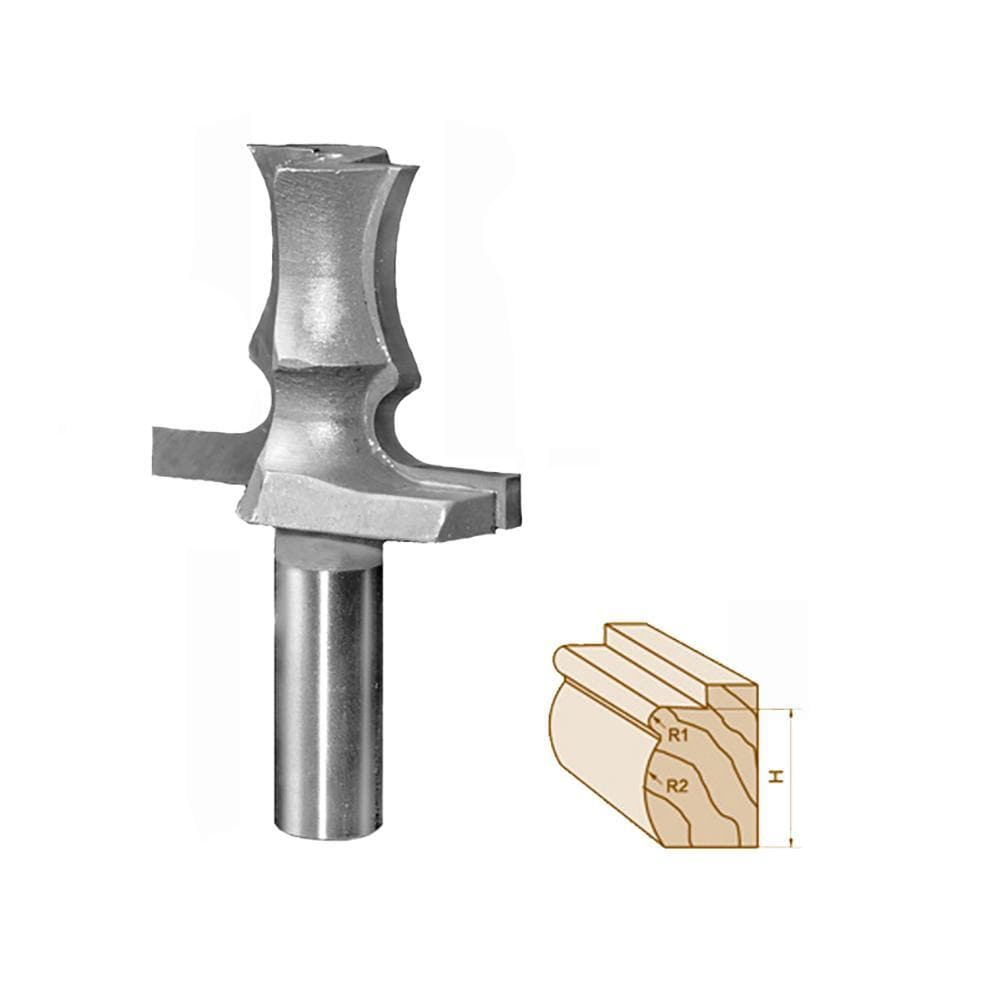A line router bit, also known as a straight or flush trim router bit, is a versatile tool used in woodworking and carpentry. It is designed to cut or trim a straight line along the edge of a workpiece, creating clean and precise edges. This tool is commonly used for tasks such as routing laminate, veneer, or edging materials, and it can be used with handheld routers or router tables.

Drawing Line Router Bit|FindBuyTool
The line router bit consists of a cylindrical cutting head with a sharp blade or multiple blades at the bottom. The cutting head is attached to a shank that fits into the collet of the router. The shank can have different diameters to accommodate various router models.
When using a line router bit, it's important to secure the workpiece properly, either using clamps or a router table fence, to ensure stability and accuracy. The depth of cut can be adjusted by raising or lowering the bit in the router collet, allowing for precise control over the amount of material being removed.
One of the primary uses of a line router bit is to trim the edges of laminate or veneer. When applying these materials to a substrate, there is often excess material that needs to be removed. The line router bit can be used to trim the excess material flush with the edge of the substrate, resulting in a clean and professional-looking finish.
To use the line router bit for edge trimming, you will start by aligning the cutting head with the edge of the workpiece. Then, you slowly move the router along the edge, allowing the cutting blades to remove the excess material. It's important to move the router in the same direction as the rotation of the bit to achieve the best results.
Another application of the line router bit is in creating decorative edges on woodworking projects. By using router bits with different profiles, such as chamfer, round-over, or ogee, you can add elegant details to the edges of furniture, cabinets, and other woodworking pieces. The line router bit allows you to create precise and consistent profiles along the edges, enhancing the overall aesthetic appeal of the project.
When using the line router bit for decorative edging, it's crucial to plan the routing path and work in a systematic manner. Start with light passes and gradually increase the depth of cut to achieve the desired profile. It's also important to maintain a steady and consistent feed rate to prevent any uneven or jagged edges.
In addition to edge trimming and decorative edging, the line router bit can also be used for other tasks such as cutting dadoes or grooves, creating rabbets, or even inlaying materials. With the appropriate router jig or template, you can achieve precise and repeatable results.
To ensure the longevity and performance of your line router bit, it's essential to handle it with care and follow proper maintenance practices. After each use, clean the bit thoroughly to remove any resin or debris that may have accumulated. Regularly inspect the cutting blades for any signs of wear or damage, and replace them if necessary. Store the bit in a clean and dry place, away from moisture and excessive heat.
In conclusion, a line router bit is a valuable tool for woodworking and carpentry projects. It enables you to create clean and precise edges, trim excess material, and add decorative details to your workpieces. By understanding its applications and using it with proper technique and care, you can achieve professional-looking results in your woodworking endeavors.

